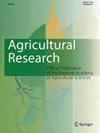Fipronil and imidacloprid are commonly used formulae in veterinary and agricultural sector. There are a few reports on their toxicological impact on the non-target life forms leading to serious respiratory and other health risks. Reactive oxygen species (ROS) are linked with cellular toxicity or damage in number of disease anomalies. Though previous studies report their effects on lungs, information on the molecular mechanism of lung injury following exposure to mixture of fipronil and imidacloprid is limited. Hence, in this study the molecular mechanism behind fipronil and imidacloprid induced lung toxicity was explored. In the animal experimental work, Swiss albino mice aged (6–8 weeks) were orally administered with high (0.91 mg/kg i.e., 1/100th of LD50) and low (0.60 mg/kg i.e., 1/150th of LD50) doses of fipronil and imidacloprid (high-1.31 mg/kg and low- 0.87 mg/kg) individually and in combination for 90 consecutive days to identify the association of lung damage with mitochondrial ROS (mtROS) formation. Blood and bronchoalveolar lavage fluid (BALF) were collected for total leukocyte count (TLC) and differential leukocyte count (DLC) analysis. Lung samples were processed for histopathological examination and mtROS measurement. TLC, DLC scores and histopathological examination suggested lung inflammation. There was statistically significant increase (P < 0.05) in mtROS in lungs treated with imidacloprid and in combination with fipronil at low doses compared to the control group suggesting the induction of oxidative stress. The findings suggest that mtROS is associated with insecticide induced lung damage and necessitates in-depth studies on other host species exposed to such insecticides in field conditions.


